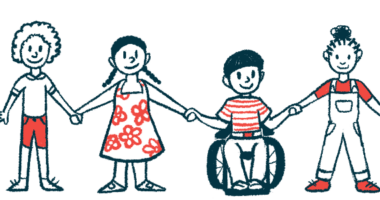Soliris more effective for patients with complement abnormalities: Study
Relapse risk higher in these aHUS patients after they discontinue Soliris

Soliris (eculizumab) appears to be more effective in atypical hemolytic uremic syndrome (aHUS) patients with complement abnormalities, than in those whose disease was triggered by other underlying conditions, a 20-year retrospective analysis has found.
The risk of disease relapse over the course of five years was 40% higher in patients with complement abnormalities after they stopped Soliris treatment, which supports “the life-long prophylactic [preventive] use of C5 inhibitor in this setting,” researchers wrote.
Findings from the analysis were described in the study “Outcome of atypical hemolytic uremic syndrome: role of triggers and complement abnormalities in the response to C5 inhibition,” published in the Journal of Nephrology.
aHUS is characterized by the uncontrolled activation of the complement system, part of the immune system’s natural defense against disease-causing agents.
Primary aHUS is a form of the disease that’s associated with abnormalities driven mainly by mutations in genes involved in regulating complement activation. Secondary aHUS refers to a form of the disease that develops in the setting of another illness, or other triggers, and in the absence of complement abnormalities.
Soliris works by binding to C5 complement protein
Soliris has been available in the U.S. since 2011 for treating aHUS. It works by binding to a complement protein, called C5, to stop excessive complement activation.
However, “it is not clear whether C5 inhibition is equally [effective] in all patients with aHUS, and in which patients the treatment can be safely discontinued,” the researchers wrote.
To answer this, a team led by researchers in Italy retrospectively analyzed data from 244 aHUS patients, including 73 children, who had been followed at their center from 2002 to 2022.
The majority were at the initial stages of the disease and had recently experienced their first aHUS episode (79.5%), while 20.5% had relapsing disease, meaning aHUS had returned following successful treatment. Patients were followed for a median of 5.7 years.
A clear disease trigger was identified in 109 patients (44.7%), while a potential complement abnormality was found in 150 patients (61.5%).
Infections most common trigger of aHUS
Infections were the most common trigger (15.6%), followed by pregnancy, miscarriage, and childbirth (9.0% each), and autoimmune diseases (7.4%).
Complement abnormalities were significantly more common in children (83.6%) than in adults (52.1%), while the presence of other triggers was markedly higher in adults (52.1% vs. 27.4% of children).
Patients were classified according to aHUS type: 40.6% had primary aHUS; 22.5% had secondary aHUS; 21.3% were classified as having combined aHUS, with the presence of complement abnormalities and an underlying trigger; and 15.6% were classified as having idiopathic aHUS, meaning that no complement abnormalities or an underlying trigger had been identified.
Primary aHUS was significantly more common in children than in adults (63.0% vs. 31.1%), while secondary aHUS was markedly more prevalent in adults (29.8% vs. 5.5%).
Conventional treatments, including plasma exchange, steroids, and the immunosuppressant rituximab were administered to 102 patients (41.8%) and Soliris to the remaining 142 (58.2%).
The rate of kidney failure, or end-stage kidney disease (ESKD), was higher among patients given conventional therapy (mean 36.3% vs. 16.2%).
Of the 73 children with aHUS, 39 had been given conventional therapy and 34 were treated with Soliris. The response rate was higher among Soliris-treated children (97.1% vs. 66.7%). The need for renal replacement therapy was much lower in the Soliris group (26.5%) than in the conventional treatment group (69.2%), as was the rate of ESKD (2.9% vs. 23.1%).
Patients with primary aHUS responded better to Soliris
Overall, patients with primary aHUS responded significantly better to Soliris than to conventional therapy, with a lower proportion of Soliris-treated patients requiring renal replacement in the acute stages (44.9% vs. 78%), and having a lower rate of ESKD (8.2% vs. 38.0%). Also, 65.3% of Soliris-treated patients saw their kidney function recover completely compared with 30% of those given conventional therapy.
The same, albeit to a lesser extent, was seen in patients with combined aHUS. Compared with those on conventional therapy, Soliris-treated patients had a marked reduction in the need for dialysis in the acute stages of the disease (46.4% vs. 83.3%). They also had a lower rate of ESKD (7.1% vs. 41.7%). The proportion of patients who experienced total recovery of their kidney function also was higher (60.7% vs. 37.5%).
No significant differences between groups were seen in patients with secondary aHUS.
Soliris was discontinued for the majority of responders (70.4%) after a median of 6.9 months. The disease relapsed in 23 patients (28.4%) after a median of 4.8 months. Children had a significantly higher relapse rate than adults after they stopped Soliris treatment (50.0% vs. 17.3%).
The relapse rate was markedly higher in patients with primary and combined aHUS (66.7% and 18.7%) than in those with secondary and idiopathic aHUS, who did not experience relapse.
Overall, “patients with primary and combined forms show a better response to C5 inhibitor but also a high risk of relapse after treatment discontinuation, whereas secondary and idiopathic forms do not exhibit a risk of recurrence following discontinuation of complement blockade,” the team wrote.









